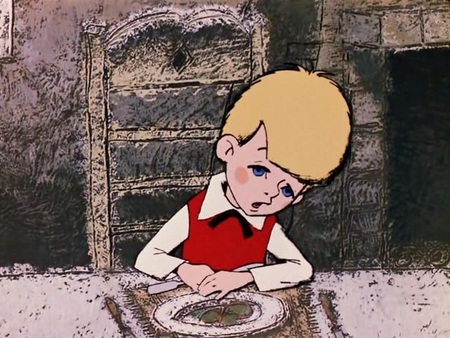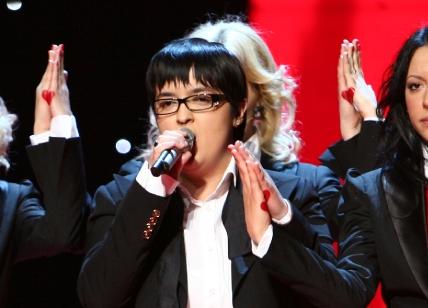
Estonians are frequently asked by their nordic compatriots something along the lines of, "Why didn't your country adopt the Nordic model when it was reconstituting the state in 1991-1992?" The line of questioning today also leads us to, "Will Estonia adopt the Nordic model in the future?"
President Ilves was recently asked this in an interview with the
City Paper, the question and reply:
Estonia, it is commonly claimed, wants to be regarded a Nordic country. Still there are obvious and profound differences between Estonian and e.g. Norwegian welfare policies. To what extent does the President consider the Scandinavian/Nordic welfare state a good model for Estonia?
I am sorry to see that such outdated clichés are still spreading. I recommend a little homework in the future, or an examination of what is happening in Estonia – Estonian and Nordic welfare policies are not so different, actually they are increasingly similar. The primary question is money.
Money, yes, but also history and, very importantly, contemporary history. You get the sense reading nordic impressions of Estonia that they a) do not know Estonia, and b) do not know themselves.
Estonia in the past has been criticized as being sort of an imaginary West. Anatol Lieven warns us in the updated version of
The Baltic Revolution to not be fooled by the Scandinavian-looking airports. You may feel that you are in the West, but you are not really in
the West.
It's the "imitation" West, fake like those "Scandinavian sweaters" old Russophone ladies sell in Tallinn's Old Town. It may look and feel like a real Scandinavian sweater, but since it was knitted by Eva Ivanova and not Bo Svensson, it's not the real thing, even if Bo Svensson pays the Chinese to make them while he tans himself aboard his yacht in the Adriatic.
I would argue that if Estonia had copied the "Nordic model" in the 1990s it would have arrived at even more of a precarious position as a "fake West." The first reality is that the modern Nordic welfare state was formed by primarily social democratic parties over the past century. The model was designed by consensus over time. It was not something that could be translated into Estonian by talented researchers at the Ministry of Social Affairs and then force-fed to the Riigikogu.
Estonia organically chose other models. It chose a flat tax, partially because it was easy to implement and partially to attract investment in what was then a very poor country. Estonia since has chosen policies though that do copy the Nordic model.
A classic example is the
Mother's Salary, implemented in 2004, that provides state financial assistance to mothers of newborns so that they can support their growing families -- and the fattening of the citizenship rolls -- while retaining their jobs. That's a policy that all the flat tax advocates in the world should ignore when they talk of the "Estonian model". President Bush admires Estonian taxation policy. I have a feeling he wouldn't admire the mother's salary.
So, organically, Estonia is embracing policies that mirror its neighbors. Partially because Finland and Sweden have positive birth rates, and Estonia has a negative one, some geniuses came to the conclusion that this kind of social support policy might help to raise the birth rate in Estonia. and, wouldn't you know, the birth rate has risen in Estonia since that policy was introduced. So, organically, Estonia came to adopt part of the Nordic Model, not because it was told to, but because it
found out the hard way that it works.
This is what the other Nordic countries do not understand about Estonia. Estonia is still a country in transition. It is likely that in the future, as Estonia accrues more wealth, it may adopt more of these classic Nordic welfare policies, not because they want to buy the whole model, but because the policies are shown to work in countries similar to Estonia. So the idea that Estonia would copy the "Nordic Model" because it likes the way "Nordic" sounds is silly. Estonia will arrive at those policies organically if they are indeed as good as the Norwegians make them out to be.
But, amidst this backdrop, we have to admit that the era of the Nordic Passport Union is behind us. The social democratic parties that built social democracy in the nordic countries in the 1950s and 1960s have given way to the government of
Fredrik Reinfeldt in Sweden, who supported Bush in both the 2000 and 2004 elections; the government of
Anders Fogh Rasmussen in Denmark, who advocates limiting immigration and lowering taxes; and even across the Gulf of Finland, it is the National Coalition Party of
Sauli Niinistö that has the popular momentum.
Is this the 'Nordic Model' they were talking about? It is certainly the "Nordic environment" that Estonia is surrounded by, an environment of tax-freezing, immigration-limiting governments run by economists and bankers, rather than career civil servants. In this way, Estonia fits in quite nicely.
And what of Nordic cooperation with supranational organizations? Denmark, Norway, and Iceland are in NATO, while Finland and Sweden are not. Finland, Sweden, and Denmark are in the European Union, while Norway and Iceland are not. Finland has adopted the euro as a currency, while Sweden and Denmark remain skeptical of the European Monetary Union. This diversity begs the question, is there a model here to follow?
And, of course, linguistic policies. Estonia has been urged by some to adopt the "Nordic Model" when it comes to languages, but proponents of such are usually referring to the Finnish model. The model of Norway, Sweden, and Denmark is actually to grant municipalities extensive rights in determining their working languages. Hence, Danish is the official language of Denmark, and is co-official in the Faroe Islands, but Faroese is not an official language in Copenhagen. So again, which model to follow?
My only prediction is that if there is a Nordic policy that works well and makes sense for Estonia to adopt it, then it will be adopted. To merely adopt a model at the bequest of a traveling bureaucrat would be more in tune with the model of "imitation West" than the real thing. Estonia, like the Nordic countries, will continue to develop and create policies where it sees fit. It may also happen that the traditional Nordic countries might borrow a policy from Estonia in the future, if they find it to be in their best interests.













